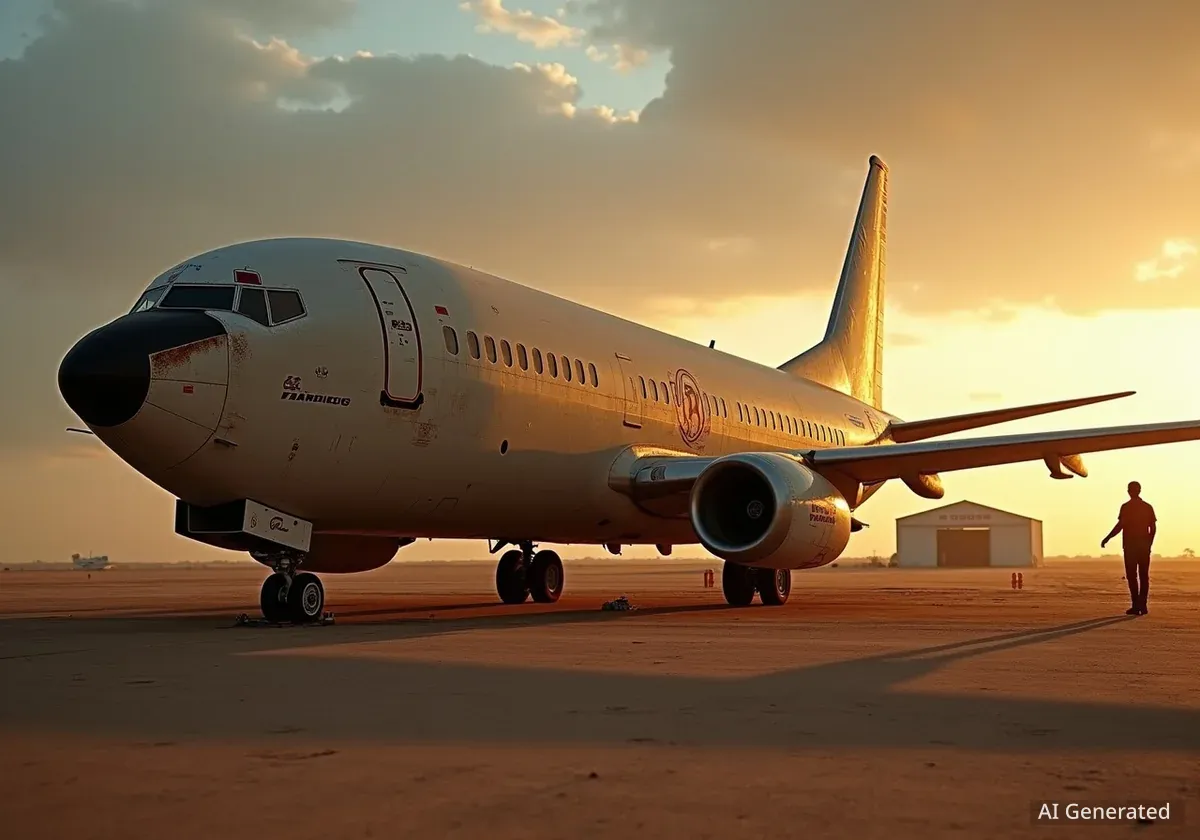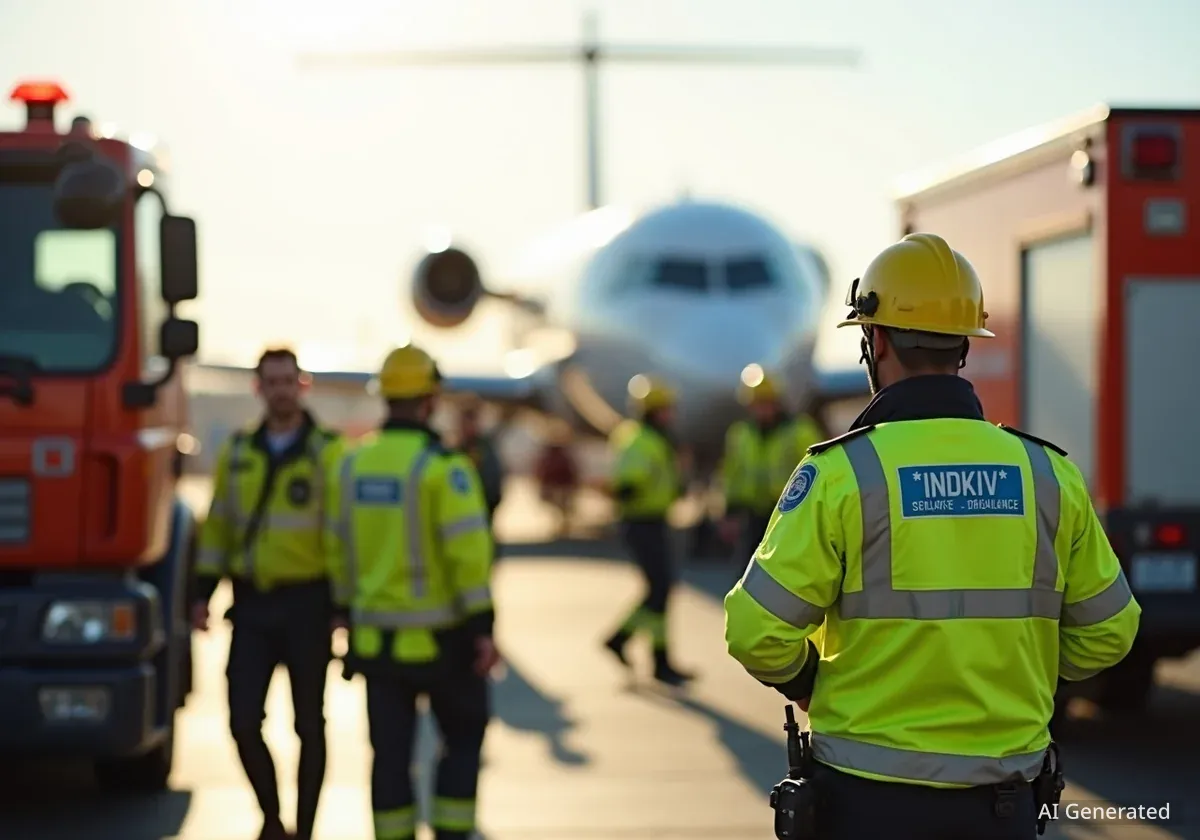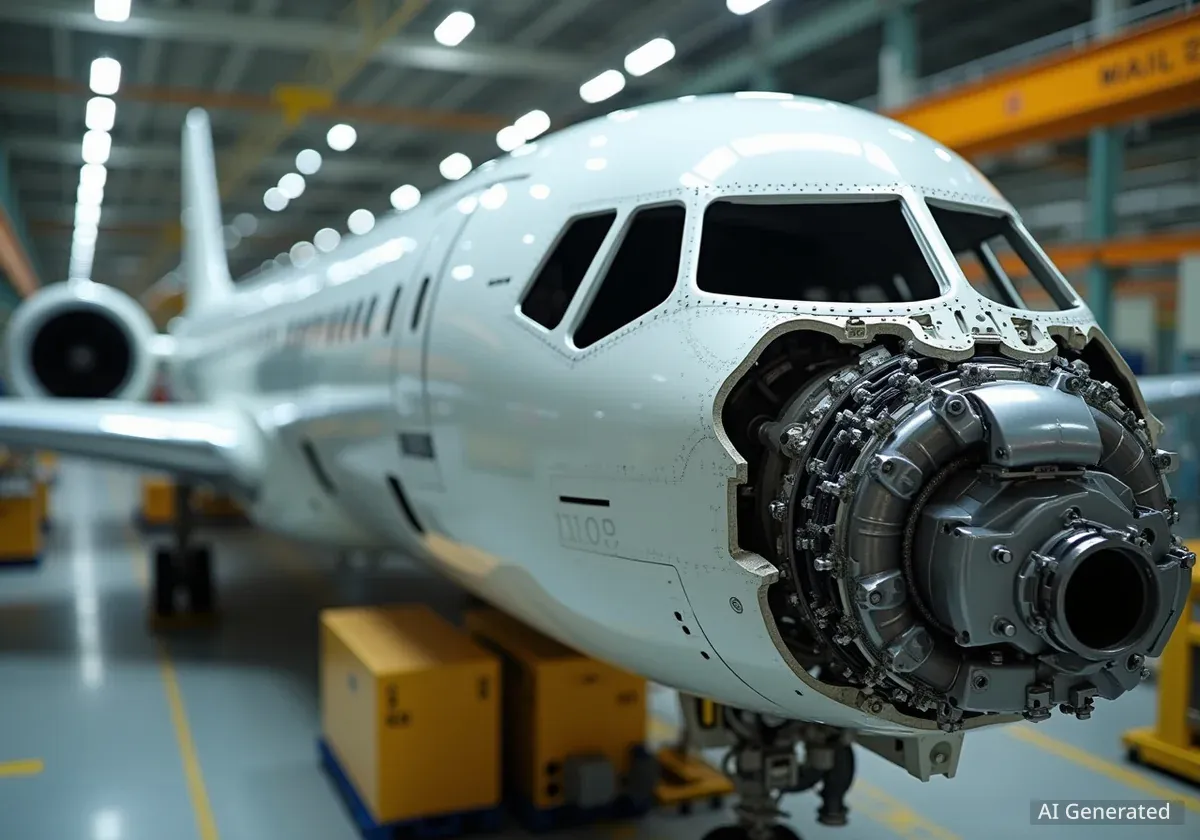More than 50 years after its first flight, a small number of Boeing 737-200 aircraft continue to operate globally. These early models, often called 'Baby Boeings,' are used for specialized roles, including military transport and flights to remote areas with unpaved runways. Their continued service highlights the aircraft's robust design and adaptability, even as most of their counterparts have been retired.
Key Takeaways
- The oldest active Boeing 737-200 is K3187 of the Indian Air Force, delivered in 1971.
- Several countries, including India, Indonesia, Venezuela, Ecuador, and Canada, still operate these aircraft.
- Many active 737-200s serve military or specialized transport roles due to their durability.
- Modifications like gravel kits allow them to operate in challenging environments.
India's Enduring Military Fleet
The title of the world's oldest active Boeing 737-200 belongs to K3187, part of the Indian Air Force fleet. This aircraft was delivered in 1971, making it 54 years old. It began its life intended for civilian use but has spent most of its operational years in military service.
K3187 transports military personnel and government officials across India's diverse landscape. Unlike many older aircraft that were retired decades ago, this 737-200 remains in active duty. This is due to the Indian Air Force's strict maintenance protocols and a continued need for reliable mid-size transport aircraft.
Aircraft Longevity
- K3187 has been flying for 54 years.
- The Indian Air Force operates four 737-200s, including K2412, K2413, and K2414, all over 42 years old.
The aircraft's Pratt & Whitney JT8D engines and proven systems contribute to its dependability. For the Indian Air Force, these jets represent a balance of practical use and historical significance. They show that older, well-maintained aircraft can still perform vital tasks in a modern aviation environment.
Latin America's Active 737-200s
Latin America is another region where the Boeing 737-200 continues to be a common sight. In Venezuela, airlines such as Venezolana, Estelar, and Avior still fly these aircraft. Venezolana's YV3471, delivered in 1978, is 47 years old and is among the oldest passenger 737s in service.
Estelar's YV2792 and Avior's YV2794, both from the early 1980s, also remain operational. These aircraft offer passengers a unique experience, reminiscent of earlier periods in aviation. Their continued use in the region highlights their suitability for local travel needs.
Historical Context
The Boeing 737-200 was introduced in the late 1960s as a short-haul aircraft. Its robust design and versatility made it popular worldwide. Many airlines relied on it for various routes before newer models became available.
Ecuador's Air Force, the Fuerza Aérea Ecuatoriana, also operates FAE-630, a 737-200 built in 1980. This aircraft is used for government and transport missions. Ecuador's high-altitude airports and rugged terrain are well-suited for the 737-200's proven durability. This demonstrates that reliability is often more important than modern features in challenging operational settings.
In Central America, Honduras-based Aviatsa operates HR-MRZ, a 737-200 from 1983. While most airlines worldwide retired the 737-200 decades ago, these operators have found ways to keep them useful. This often involves careful maintenance and adapting the aircraft for specific tasks. Across Latin America, the 737-200 continues to be a symbol of endurance in aviation.
Indonesia's Military Workhorses
Indonesia heavily relies on the Boeing 737-200 for its military operations. The Indonesian Air Force (Tentara Nasional Indonesia Angkatan Udara or TNI-AU) uses multiple examples, many delivered in the early 1980s. Aircraft like AI-7301, AI-7302, AI-7303, and AI-7304 are all more than 42 years old and remain in active service.
Indonesia is one of the largest military operators of this aircraft type globally. As an archipelago nation with over 17,000 islands, Indonesia finds the 737-200 ideal. It provides a good balance of capacity, range, and ruggedness. Its ability to operate on shorter or less developed runways is crucial for moving personnel and supplies between bases across the country.
"The 737-200 offers an ideal balance of capacity, range, and ruggedness for Indonesia's sprawling archipelago," an aviation expert noted. "Its ability to handle short or less-developed runways makes it invaluable for moving personnel and supplies between bases scattered across the country."
The long service life of this fleet shows the military's trust in the aircraft. It also reflects the ongoing need for reliable mid-sized transport in a nation where logistical challenges are common. Unlike commercial aircraft, Indonesia's military 737-200s are not primarily judged on fuel efficiency. Instead, their continued use highlights their robustness under demanding conditions.
Canada's Specialized Arctic Flyer
In Canada, the Boeing 737-200 has found a new purpose as a specialized aircraft for demanding routes. Nolinor Aviation, based in Quebec, operates C-FTWW, a 737-200 built in 1981. This aircraft has been in service for over 44 years.
What makes this particular jet unique is its gravel kit modification. This allows it to land on unpaved and remote runways. Modern jets often cannot operate in such conditions. These features make the 737-200 well-suited for Canada's Arctic and northern regions.
737-200 Specifications (Data from SKYbrary)
- Wing span: 93 ft (28.35 m)
- Length: 100 ft 1 in (30.53 m)
- Engines: 2 × Pratt & Whitney JT8D-9A
- Maximum Take-Off Weight (MTOW): 115,500 lb (52,390 kg)
- Range: 1,200 NM (2,220 km)
Communities and mining operations in these areas often rely on rough airstrips. Nolinor's aircraft transport passengers and heavy equipment, providing vital connections to areas inaccessible by road for much of the year. While larger airlines stopped using this type long ago, Nolinor has embraced its niche role. The company acts as a specialist operator of one of aviation's most enduring designs.
For travelers and aviation fans, flying on one of these missions offers a rare chance to experience the classic 737-200 in its intended environment. With its gravel kit, rugged engines, and ability to handle extreme cold, Nolinor's fleet demonstrates the "Baby Boeing's" continued capabilities. This 1981 jet thrives in some of Earth's harshest environments, despite the rise of advanced technology.
Global Military Operators and Lasting Legacy
Beyond India and Indonesia, other air forces continue to use the Boeing 737-200 for transport and government duties. The Fuerza Aérea Mexicana operates FAM-3520, a 737-200 delivered in 1984, which remains active after more than four decades. The Fuerza Aérea Ecuatoriana still uses its veteran FAE-630, and the Fuerza Aérea Venezolana has also utilized the type.
These aircraft are not simply old planes; they are active parts of military logistics and VIP transport. The 737-200's value to air forces comes from its flexibility. It can be configured for passengers, cargo, or a combination, depending on mission needs. Its relatively compact size makes it economical to operate compared to widebody jets, yet it offers more range and comfort than many turboprops.
Top 10 Oldest 737-200s in Active Service (Data from ch-aviation)
- Indian Air Force K3187 (1971, 55 yrs)
- Venezolana YV3471 (1978, 48 yrs)
- TNI-AU (Indonesian Air Force) AI-7304 (1978, 47 yrs)
- Fuerza Aérea Ecuatoriana FAE-630 (1980, 45 yrs)
- Penial Air 5Y-CJQ (1981, 45 yrs)
- Nolinor Aviation C-FTWW (1981, 45 yrs)
- Canadian Airways TN-AIX (1982, 44 yrs)
- TNI-AU (Indonesian Air Force) AI-7301 (1982, 43 yrs)
- Jayawijaya Dirgantara PK-JRA (1982, 43 yrs)
- TNI-AU (Indonesian Air Force) AI-7302 (1983, 43 yrs)
For countries that do not require or cannot afford larger military transport aircraft, the 737-200 remains a practical solution. Despite their age, these military 737s often receive careful maintenance and, in some cases, upgrades to their avionics and interiors. Unlike airlines, which retire aircraft when they become uneconomical, militaries can keep them flying for decades if they meet operational requirements. This ensures that the Boeing 737-200 continues to serve in military colors, proving its longevity and adaptability.
The Enduring Power of the Baby Boeing
More than 50 years after its first flight, the Boeing 737-200 continues to operate against expectations. From India's record-setting K3187 to Nolinor's gravel-kit operations in Canada and military fleets in Indonesia and Mexico, this aircraft has shown that durability and versatility can outlast newer designs. While much of the world has moved to more fuel-efficient 737NGs and MAX jets, these surviving classics tell a story of endurance and adaptability in specialized roles.
The common factor among operators still flying the 737-200 is not nostalgia but operational necessity. Whether navigating the harsh terrain of northern Canada, connecting remote islands in Indonesia, or performing military transport duties in Latin America, the aircraft continues to do jobs that newer jets are not always suited for. Its relatively simple systems, proven engines, and robust construction have made it ideal for environments where reliability is more crucial than efficiency.
For aviation enthusiasts, the continued presence of the 737-200 in the skies is a rare opportunity to experience a piece of living history. Each flight is a connection to the early days of Boeing's 737 program. As long as operators find value in its unique capabilities, the "Baby Boeing" will continue to demonstrate that sometimes, the oldest planes can still be the most dependable.





